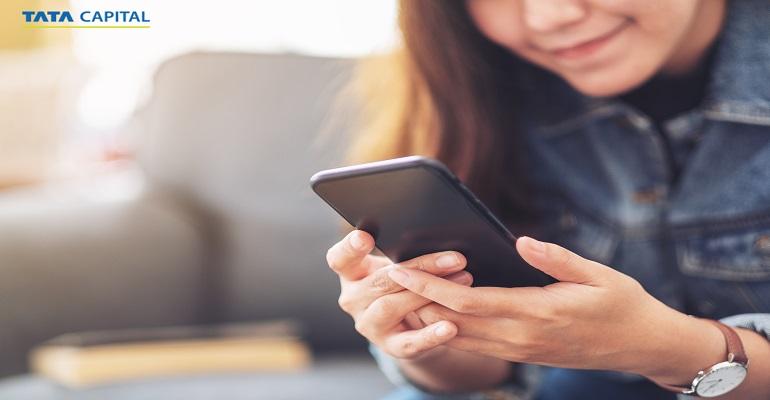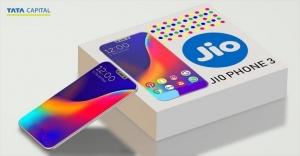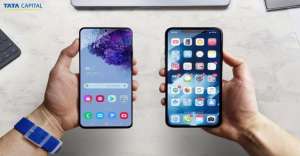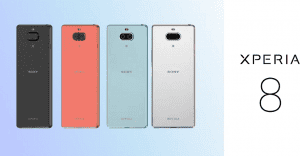The current tech market is witnessing the biggest surge in smartphones. There are numerous options available, but it is essential to know how to distinguish between what’s superficial and what’s durable. Top smartphone brands like Apple, Samsungand Google are the foremost contenders in the run for developing the best smartphones and are releasing new feature phones and updates almost every few months. Everyone seems to need a new smartphone every 3-4 years on an average, so it is only reasonable to compare and choose the latest smartphone that is right for you.
Below is a detailed mobile phone buying guide that will help you understand how to choose a smartphone. It covers everything you need to know before assessing what you want to buy, including internal factors like the Operating System (OS), performance, battery and external factors like display, screen size, and camera. Moreover, following this smartphone buying guide will help you gain a better insight into what fits your budget and needs.
Picking an Operating system
Before deciding which smartphone suits you best, you need to pick an OS of your choice. Currently, the only two established and trustworthy operating systems are iOS and Android. Android smartphones are dominant in the market since the latest Android phones always offer a spectrum of choices. This includes a flexible design, display, specifications, and price. It even has many customizable options and has Google services inbuilt in the phone. However, its flaw lies in the fact that when it comes to software updates, they take longer to arrive and mostly depend upon the manufacturer. The only exception to this is the line of Google Pixel phones – the Pixel 4 and Pixel 4 XL. This problem is not experienced in iOS operated Apple smartphones because they offer early access to updates and have better privacy and security systems in place.
Both these systems are convenient to use, and it is reasonably easy to even switch from using one to another, keeping in mind how comfortable you are with switching systems. However, this depends upon whether you are already an iOS or Android user. Smartphone buyers tend to forget that they are used to a particular OS like in the case of Android, which has predominantly Google apps installed such as Google Docs, Gmail, and Google Maps. iPhone users, on the other hand, are used to the early access of iPhone updates and apps, more accessories, and the seamless use of the phone with other Apple devices. Reading this list of the top smartphones of 2020 with best features will help you evaluate which phone and OS is suitable for you.
The power of up to date Performance
Understanding the performance of a smartphone is the second key factor in choosing the best smartphone. When we talk about performance, we are actually talking about the power of the processor, RAM, and internal storage. The newer the processor, the faster and efficient it is. When it comes to iOS, Apple’s A13 bionic processor is unbeatable. And when it comes to Android, the Qualcomm Snapdragon 865 is the best processor for mobile that you can have. It is always good to have a smartphone with latest processor, as it is the processor which directly affects the multitasking ability, gameplay, clock speed and overall performance of the smartphone.
When it comes to RAM, a minimum of 6GB RAM is essential for Android smartphones to work efficiently. Nothing lower than that is worth your money. Several Android mobiles with 8GB RAM have also been introduced in the smartphone sector, with many new mobiles offering up to 12GB RAM. The concept of minimum RAM does not concern iOS phones so much since they work on a completely different memory management system.
Additional Read: Smartphones With The Best Performing RAM In 2020.
The third factor to consider is the internal storage capacity of the smartphone.
Smartphones now a days are equipped with a bare minimum of 32GB internal storage, however most of this memory is eaten up by system memory, inbuilt apps and external apps. Hence, it is highly recommended to opt for a phone with at least 64GB internal memory.The trend in 2020 is towards 128GB inbuilt storage with premium phones offering up to 256 GB storage on board. Depending on your further storage needs, you can expand your memory through a micro SD slot. This concept of microSD card concerns only Android smartphones, as iOS phones require you to pick your internal storage capacity once and for all.
Battery life, privacy and network
When it comes to batteries, removable batteries are a totaly extinct, so, you need to pick a phone with a strong mAH capacity, resolution, and software. Technically, a smartphone that has a battery capacity of a minimum of 4000 mAh and lasts up to 10 hours with continuous 4G/LTE streaming is considered to have a strong battery life. Smartphones with battery capacity as high as 5000 mAh are available these days. These are the flagship phones that last almost a whole day once charged, but the prices of these flagship phones can be at the higher end. Not only long lasting batteries, but fast charging batteries is also an essential specification of the best feature phones. So, when it comes to Android phones, OPPO Reno Ace, for instance, is one of the fastest charging phones, taking only 30 minutes to charge from 0 to 100 percent. Needless to say, iOS smartphones have fast charging too, but users need to purchase a fast charger separately. However, a lot of the new phones have wireless charging, which is a relief. If your mobile usage requires a long lasting battery life then you need to check out this compilation of top smartphones with best battery life.
When it comes to privacy and security, iOS phones are upfront in the competition. Since iOS devices receive timely security updates, they have a more reliable level of privacy. Comparably, Android phones have a shelf life for OS updates, usually lasting for an average of 2 years. Thus, they offer a lower level of security and guarantee. iOS smartphones also have a high-end facial recognition feature along with a fingerprint sensor for maximum protection. Face ID is gaining momentum in certain Android phones too, including Samsung Galaxy S9 and Note 9. Almost all phones have the basic fingerprint sensor, but it is essential for the user to be comfortable with the placement of the sensor – i.e., front or back.
Another essential factor that you must check is if the smartphone you want has a good network connection. How do we know if our smartphones will support service providers like Airtel, Vodafone or Jio, among others? Apart from a dual sim smartphone, you need to see if it supports a basic LTE/ 4G feature phone network. Smartphones that support only 2G and 3G networks are almost outdated. Nowadays, 5G networks have entered the domain and are spreading amongst users like wildfire. So, it is essential to check if your smartphone can adapt to the necessary network coverage and function on reasonably priced data plans.
Good Camera for the win
Everyone wants a good smartphone camera, and why not? The best mobile camera is not the one with bigger pixel counts but the one that balances high-quality image resolution, the length of the aperture, and quick shutter speed. Pay attention to whether a dual camera will suffice for you, or you would like the triple camera mobiles. If you are a photography enthusiast, you might want to go for a quad-camera setup – a feature seen in the latest good camera phones. An iPhone is best known for its flawless smartphone camera features, including 12 MP triple cam, true depth cam, and 2x optical zoom. Even in this age of quad cameras, the quality of iPhone’s life-like images is above par. It also has camera features like auto portrait selfie mode, editing live photos, and HDR balanced lighting. Android smartphones like Google Pixel 4 and Pixel 4 XL are not far behind with 12.2MP main camera having f/1.7 wide aperture along with a 16MP telephoto shooter with f/2.4. The camera is equipped with exposure control while shooting, making details stand out even in low light conditions.
When it comes to video playback, you need to factor in both the resolution and the frame rate. A standard resolution of 4K at 60 frames per second is considered as an integral part of a top camera phone. Make sure that you test the phone before you buy a smartphone and see if it can capture pictures smoothly and in a lag-free manner.
Additional Read: 10 Things to Consider Before Buying a Good Camera Smartphone
Design and Display
Your smartphone’s design/display is one of the most important external features to consider since you are going to spend a lot of time holding and gazing at it. If you prefer to operate your smartphone with one hand, then look for one with a smaller screen size and comfortable aspect ratio. Small screen smartphones are usually around 5 inches long and are compact and powerful. The iPhone 8 and Google Pixel 2 are examples of such top smartphones. Medium-sized smartphones are for those users who want the comfort of design yet want an immersive experience. They usually measure up to 5.5 inches and provide an excellent balance to users. The One Plus 8 and the Samsung Galaxy S20 are few such phones which give you the luxury of both. Large-sized smartphones are usually like tablets and are great for streaming clear videos, reading e-books, and multitasking. They measure somewhere between 5.5 inches to 6.7 inches. Phones with slim bezels that increase the aspect ratio without increasing the panel size are trending in 2020. These phones, like Huawei P30 Pro, enable comfortable one-handed operations without compromising on viewing quality.
Coming back to the smartphone’s design – choose one that is well built yet aesthetically pleasing. For instance, a glass bodied design is better looking than metal but can be fragile at certain moments. At the very least, pick a smartphone that can accommodate a gorilla glass display. Such a display is scratch resistant and shatterproof. Many smartphones these days have gorilla glass protection both in the front and on the back, like the Samsung Galaxy S20 Ultra. Also, if you are concerned about factors like a waterproof design, then make sure you pick one that has proved to be so in the past.
The most crucial factor is the quality of the display, an indicator of how to select a smartphone with the best features. What you must look for while choosing the display is the brightness and colour quality of the display screen. Smartphones having an AMOLED display offer more vibrant hues and wider viewing angles than those with LCD screens. Currently, HDR displays are right now the best display phones in trend. They enable you to watch a movie or series with a superior contrast spectrum, thus improving the immersive nature of videos. Reviews, testimonials, and comparisons will help you figure out a list of phones with cutting edge display technologies.
Additional read: Top Smartphones With Best Display
Understanding the price and the reasonable resale value
While price can be a crucial factor in deciding which smartphone to buy, it should not be the only factor. As stated above, a lot of internal factors should be considered before buying a smartphone. This is because, from a distance, a low-budget phone will seem to have standard and fairly long-lasting features, but in the long run, its maintenance or monthly value will end up costing you more than the smartphone’s value itself. The first step in detecting if your smartphone is value for money is assessing three key aspects – the OS, processor, and security. Once these three are in place, the rest is something you can adjust accordingly. If at all price is the most important factor then you should check the list of top phones under 15000 and choose the best one for you.
These factors are crucial because, along with price, there is something known as the Reasonable resale value of a smartphone. Now, the reasonable resale value is the price of the smartphone after it is sold a few years post its ownership. Resale buyers will not pay much heed to the design, display, or the camera quality, as much as they will pay attention to the 3 key factors mentioned above. It makes sense because a smartphone which has regular software updates and a robust security system in place will have a longer lifespan. Now, for most Android smartphones, this is not the general case, and they have a shelf life of 2 years in place.
Additionally, the frequency of updates is unpredictable and intermittent, so chances are that your Android smartphone will be outdated after 3 years. There are a few exceptions to this though, like the Google Pixel smartphones, OnePlus 7T, or the Motorola One, among a few others. Naturally, this is not the case for iOS phones as they have an inbuilt OS system that supports early access to updates. However, iOS phones have their set of drawbacks too and can be a mighty strain on the wallet.
Pitting one smartphone against another won’t help. It is you who needs to remember to look above the surface and get an in-depth analysis of a smartphone before buying it. It seems like there are a lot of factors to consider before choosing the right smartphone, right? In fact, even with all these essential factors, you must take into consideration certain additional factors as well, but then again, that depends on your needs and budget. Also, comparing top brands is an excellent way to figure out how to select a smartphone and the best budget phone. Consider looking at the current top smartphone brands in India and their upcoming smartphones to get a head start.
Know More


 12 mins read
12 mins read
 Previous Post
Previous Post









